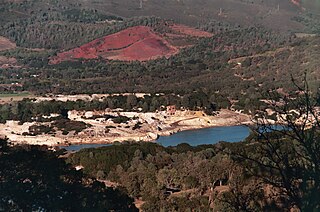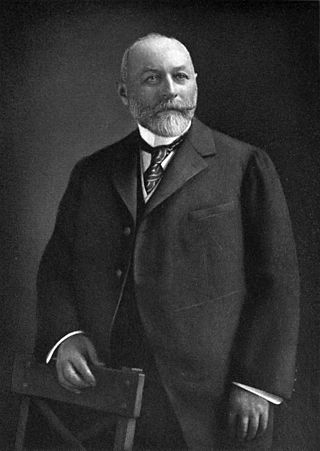
Insider trading is the trading of a public company's stock or other securities based on material, nonpublic information about the company. In various countries, some kinds of trading based on insider information are illegal. This is because it is seen as unfair to other investors who do not have access to the information, as the investor with insider information could potentially make larger profits than a typical investor could make. The rules governing insider trading are complex and vary significantly from country to country. The extent of enforcement also varies from one country to another. The definition of insider in one jurisdiction can be broad and may cover not only insiders themselves but also any persons related to them, such as brokers, associates, and even family members. A person who becomes aware of non-public information and trades on that basis may be guilty of a crime.

Spindletop is an oil field located in the southern portion of Beaumont, Texas, in the United States. The Spindletop dome was derived from the Louann Salt evaporite layer of the Jurassic geologic period. On January 10, 1901, a well at Spindletop struck oil. The Spindletop gusher blew for 9 days at a rate estimated at 100,000 barrels (16,000 m3) of oil per day. Gulf Oil and Texaco, now part of Chevron Corporation, were formed to develop production at Spindletop. The Spindletop discovery led the United States into the oil age. Prior to Spindletop, oil was primarily used for lighting and as a lubricant. Because of the quantity of oil discovered, burning petroleum as a fuel for mass consumption suddenly became economically feasible.

Sulfur (also spelled sulphur in British English) is a chemical element; it has symbol S and atomic number 16. It is abundant, multivalent and nonmetallic. Under normal conditions, sulfur atoms form cyclic octatomic molecules with the chemical formula S8. Elemental sulfur is a bright yellow, crystalline solid at room temperature.

Sulphur is a city in Calcasieu Parish, Louisiana, United States. The population was 21,809 in 2020. Sulphur is part of the Lake Charles metropolitan statistical area.

Port Sulphur is a census-designated place (CDP) on the West Bank of the Mississippi River in Plaquemines Parish, Louisiana, United States; at the 2020 census, it had a population of 1,677.
The 2003 mutual fund scandal was the result of the discovery of illegal late trading and market timing practices on the part of certain hedge fund and mutual fund companies.
Freeport-McMoRan Inc., often called Freeport, is an American mining company based in the Freeport-McMoRan Center, in Phoenix, Arizona. The company is the world's largest producer of molybdenum, is a major copper producer and operates the world's largest gold mine, the Grasberg mine in Papua, Indonesia.

Anthony Francis Lucas was a Croatian-born American oil explorer. With Pattillo Higgins, he organized the drilling of an oil well near Beaumont, Texas, that became known as Spindletop. This led to the widespread exploitation of oil and the start of the Petroleum Age.

The Frasch process is a method to extract sulfur from underground deposits by taking advantage of the low melting point of sulfur. It is the only industrial method of recovering sulfur from elemental deposits. Most of the world's sulfur was obtained this way until the late 20th century, when sulfur recovered from petroleum and gas sources became more commonplace.

The Sulphur Bank Mine is located near Clearlake Oaks and Clear Lake in Lake County, California. The 150-acre (0.61 km2) mine became one of the most noted mercury producers in the world.

Feargus O'Conner Bowden Squire, often referred to as F. B. Squire, was an executive with the Standard Oil Company and former mayor of Wickliffe, Ohio. He is well known in the petroleum industry for introducing a number of innovations, such as the tanker truck and door-to-door delivery of refined oil, and for financing a breakthrough in the mining of sulfur.

Herman Frasch [or Hermann Frasch] was a chemist, mining engineer and inventor known for his work with petroleum and sulfur.

Kidd Mine or Kidd Creek Mine is an underground base metal (copper-zinc-silver) mine 24 km (15 mi) north of Timmins, Ontario, Canada. It is owned and operated by Swiss multinational Glencore Inc. The mine was discovered in 1963 by Texas Gulf Sulfur Company. In 1981, it was sold to Canada Development Corporation, then sold in 1986 to Falconbridge Ltd., which in 2006 was acquired by Xstrata, which in turn merged with Glencore in 2013. Ore from the Kidd Mine is processed into concentrate at the Kidd Metallurgical Site, located 27 km (17 mi) southeast of the mine, which until 2010 also smelted the ore and refined the metal produced. Following the closure of the majority of the Met Site, concentrate is now shipped to Quebec for processing. Kidd Mine is the world's deepest copper-zinc mine.

Intrepid Potash, Inc., based in Denver, Colorado, is a fertilizer manufacturer. The company is the largest producer of potassium chloride, also known as muriate of potash, in the United States. It owns three mines, all in the Western U.S., near the cities of Carlsbad, New Mexico; Moab, Utah; and Wendover, Utah.
Sulfur production in the United States was 9.04 million metric tons of sulfur content in 2014, all of it recovered as a byproduct, from oil refineries, natural gas processing plants, and metal smelters. The United States was second in the world in sulfur production in 2014, behind China. The sulfur recovered was marketed in the forms of native (elemental) sulfur, and sulfuric acid. Total value was US$927 million in 2014.
Guy Thornton McBride was an American chemical engineer who was a professor at Rice University, president of the Colorado School of Mines (CSM) and as an executive of a major American corporation. McBride earned a bachelor's degree in chemical engineering from the University of Texas (UT) in 1940, where he was valedictorian, and the Doctor of Philosophy degree from Massachusetts Institute of Technology (MIT), in 1948.

The Union Sulphur Company was an American sulfur mining corporation founded in 1896 by the famous inventor Herman Frasch. It utilized the Frasch Process to extract previously inaccessible sulfur deposits located beneath swampland in Louisiana. The Union Sulphur Company dominated the world sulfur market until its patents expired in 1908. Its success led to the development of the present-day city of Sulphur, Louisiana. After its sulfur patents expired, the company transitioned into oil and natural gas production and was renamed the Union Sulphur & Oil Company and later the Union Oil & Gas Corporation.

The Sicilian method was one of the first ways to extract sulfur from underground deposits. It was the only industrial method of recovering sulfur from elemental deposits until replaced by the Frasch process. Most of the world's sulfur was obtained this way until the late 19th century.

SEC v. Texas Gulf Sulphur Co. is a case from the United States Court of Appeals for the Second Circuit which articulated standards for a number of aspects of insider trading law under Section 10(b) of the Securities Exchange Act and SEC Rule 10b-5. In particular, it set out standards for materiality of inside information, effective disclosure of such information, and what constitutes a "misleading" statement. Texas Gulf Sulphur represented the first time a federal court held that insider trading violated federal securities law and remained the leading case on insider trading for a decade. Over time, the U.S. Supreme Court embraced some of its holdings while rejecting others. The case continues to receive significant scholarly attention.
Walter Hull Aldridge was an American mining and metallurgical engineer. He was a recipient of the William Lawrence Saunders Gold Medal and the John Fritz Medal.
















